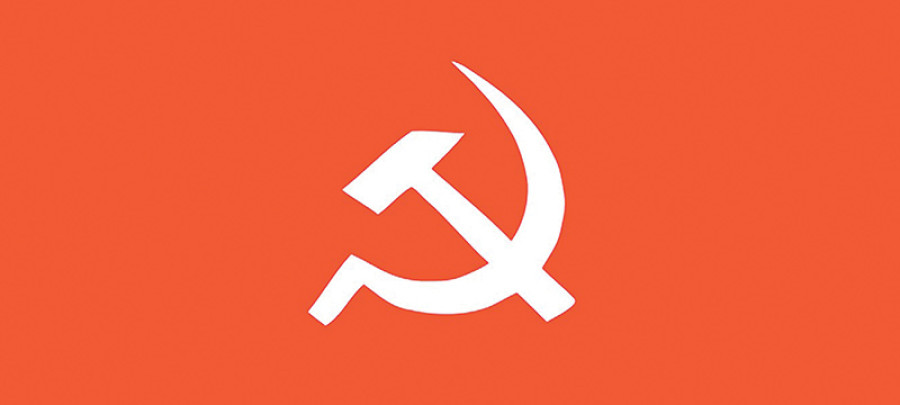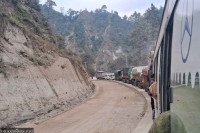Opinion
Parliamentary communists
There is no trace of communism except for the sickle and hammer on the party’s flag
Karl Marx’s communist rule exists nowhere today. China, considered to be a bastion of one-party communist rule, has no trace of Marxism but continues to practice ‘bits of Leninism’, to quote Chris Patten, the last British governor of Hong Kong. Yet, its falsified versions are sold to ordinary people across the world to gain access to power. Nepal is no exception. There is no trace of communism except for the sickle and hammer emblazoned on the party’s flag. Groups that came into temporary existence thrived on extremist slogans against what they called class enemies and the bourgeoisie, but later vanished or changed their course by adopting the same parliamentary system they had denounced to the hilt.
Nothing more than a symbol
Nepal provides an astonishing picture. Why are the Nepali people being increasingly attracted to radical and left slogans and populism, if not communist ideology, and what is the secret behind the communist brand that helps catapult communists into the structure of power? Historically, Nepali rulers, regardless of their dynastic and family backgrounds, chose to be friendly to India for their own personified regime interests. Such bilateral relations continued even after India’s independence, subsequently encouraging Indian power elites to indulge in Nepal’s domestic affairs to which Nepali political elites started showing their annoyance.
Meanwhile, the appeal of communism across the world contrived divisions within the country, putting them into anti-Indian and moderate pro-Indian camps. What is surprising is that even those diehard communists could not provide any alternative model of one-party rule as in the Soviet Union or People’s Republic of China, nor did they succeed in defying the ongoing liberal democratic exercises. Nonetheless, as Naxalites (Jhapali) or Maoists, they opposed parliamentary democracy, calling it a symbol and substance of Western capitalism and imperialism, but subsequently went on to change their course when their revolutionary slogans and populism didn’t match their actions.
Two, nationalism which, in Nepal, is understood as nothing more than anti-Indianism, could be used as a powerful weapon for political mobilisation. Indian power elites, who took Nepal for granted, also contributed to making these elements perennially hostile to India. Both the structural security relationship, as underlined by the 1950 Nepal-India Treaty of Peace and Friendship, and some of its special provisions for giving equal treatment to the nationals of both countries, have been used as an excuse for raising nationalistic sentiments. Nepal’s kings, who until the end of the monarchy in 2008, wanted to consolidate power on the plank of nationalism, found the communists as their strategic allies. Thus, historical legacy and the unchanged mindsets of Indian and Nepali power elites provided a breeding ground for communists in Nepal.
Three, the changed geo-political context following the coming of the People’s Republic of China into existence in 1949 and subsequently unfolding Tibet developments and burgeoning Sino-Indian rivalry, eventually turning into a border war in 1962, and India’s declining influence in shaping the power structure in Nepal also helped the communists to grow. King Mahendra’s coup against the first ever elected government led by Nepali Congress (NC) leader BP Koirala and the NC’s armed activities conducted from across the India-Nepal border drove the king to be close to China in order to thwart Indian and NC pressure to restore democracy.
Yet, some communist splinter groups didn’t fall in line with the regime despite Chinese support to the king. In fact, in 1990 and later in 2006, both communist and democratic forces joined hands to restore multiparty democracy and eventually abolish the monarchy itself. These developments helped the communists to establish their democratic credentials while retaining their original dogma of Marxism and Leninism. They became parliamentary communist groups with a two-way strategy by deliberately using Marxist-Leninism as a showcase while enjoying power and state patronage by transforming the party into a parliamentary electoral machine. This has paid them rich dividends as other competitive parties’ enabling capacity was reduced drastically in the last elections.
The NC, a liberal party, is bereft of both credible leaders and issues of popular attraction. It has failed to resist the rapid rise of communism due to lack of sound policy issues and organisational capability. The middle class values that were once considered to be the strength of liberal democracy have been seized by the communists as they are smarter to beat the NC with promises and organisational networks. Though India’s preeminent position cannot be undermined in the geo-political context, China has also been visibly active in recent years. This became evident following the 2015 Indian blockade against Nepal for making constitutional room for the Tarai (plains) parties’ demands for recognition of Tarai-Madhes identity.
Four, the tradition of liberal values that Nepali elites adopted since the 1940s and overall impacts of globalisation have also compelled the communists to be indigenous. Basically thriving on middle class values and culture, the communists are no less enticed by the power of glamour and chances of becoming nouveaux riches under the parliamentary dispensation. The Nepali people know that there is no difference between the communists and the ‘democrats’ in terms of issues and allurement of money and power. Thus, the transformation of major communist parties into a new parliamentary avatar has paid them well.
Giving a chance
Finally, a crisis of governance and the failure of previous governments to deliver anything to the ordinary people along with smart ‘competitive populism’ motivated the Nepali people to give a chance to the communists. Although communist leaders had also headed governments under the 1990 and the 2007 Interim Constitution, people wanted to see the communists come to power with an absolute majority hoping that such a stable government would transform their condition. However, such hopes seem to have been belied as the present KP Sharma Oli’s two-thirds majority communist government too has failed to show any result as of today. If it further loses ‘performance legitimacy’, its future is as much in the dark as of previous governments. Yet, it will be a good test of communist rule in the country.
Baral is a professor of political science, writer and former ambassador of Nepal to India.




 13.98°C Kathmandu
13.98°C Kathmandu











